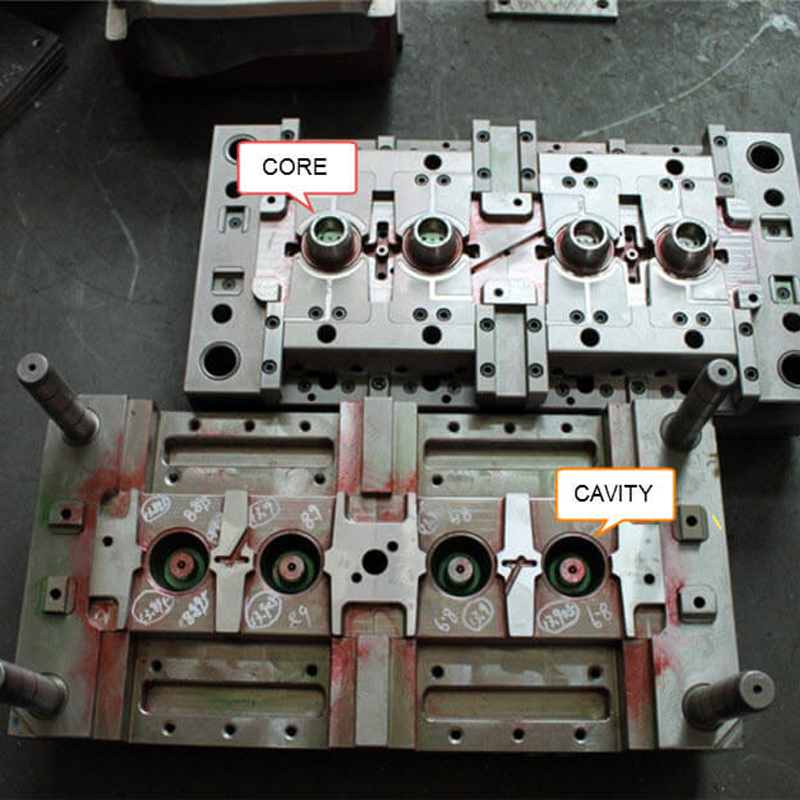In the realm of injection molding, the core and cavity are integral components that significantly impact the quality, precision, functionality, and longevity of molded parts. Their meticulous design, construction, and upkeep are crucial for producing consistent, high-quality injection-molded products. This article delves into the core and cavity in injection molding, highlighting their types, importance, and differences while showcasing the advantages offered by Toolingsun in this domain.
Defining Core and Cavity in Injection Molding
In injection molding, the core and cavity collaborate to create the desired shape of the molded part. Upon closing the mold, these components form a cavity that is subsequently filled with molten plastic, shaping the final product. The precision of the core and cavity’s design and machining is paramount for ensuring accurate replication of part geometry and optimal molding conditions.
The Cavity in Injection Molding
The cavity is the stationary part of the mold, responsible for forming the outer surface of the molded part. It dictates the product’s shape, texture, and aesthetic appearance. The cavity is instrumental in achieving the desired visual qualities and dimensional accuracy of the final product.
The Core in Injection Molding
The core is the movable component within the mold that shapes the internal features of the part. It defines complex details such as holes, recesses, and internal contours. The core operates within the mold to establish the specific geometry of the part’s interior, playing a vital role in its overall functionality.
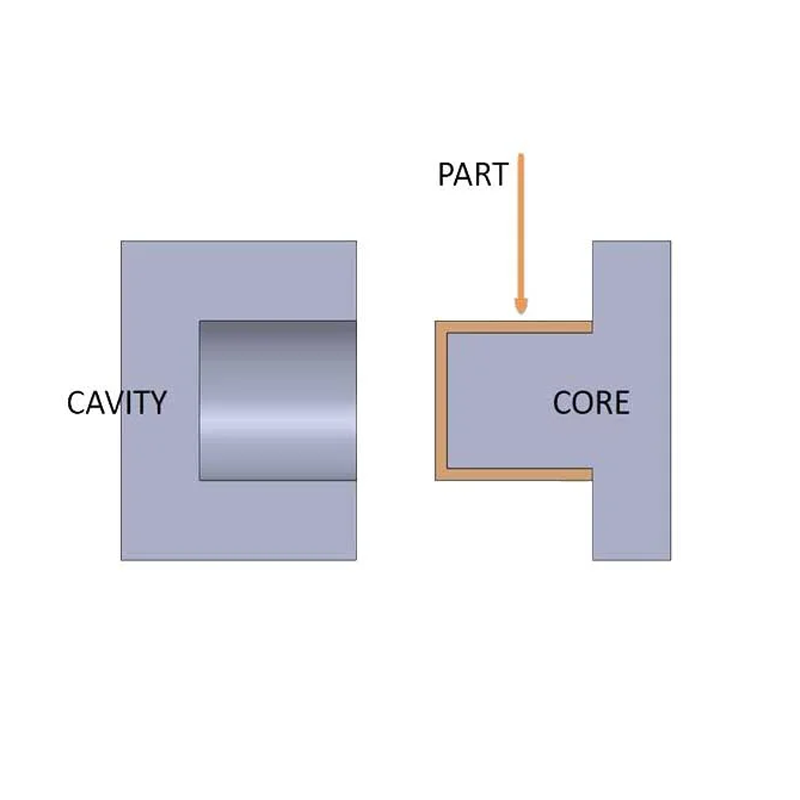
Significance of Core and Cavity in Injection Molding
The importance of cores and cavities in injection molding can be summarized as follows:
– Shape and Accuracy: The core and cavity collectively define the shape and dimensions of the molded part, ensuring precise replication of the desired features and surface finishes. Well-designed cores and cavities contribute to the accuracy and repeatability of the molding process.
– Mold Functionality: Cores and cavities are essential for the overall operation of the mold. They facilitate the proper flow and distribution of molten plastic, ensuring consistent filling of the cavity. Effective design and machining of these components enhance mold efficiency.
– Tooling Durability: Given the high stress and thermal cycles experienced during injection molding, cores and cavities must be constructed from durable, wear-resistant materials. The quality and maintenance of these components directly influence the mold’s longevity and performance.
– Cooling and Ejection: Cores and cavities also play crucial roles in the cooling and ejection processes. They typically include cooling channels to dissipate heat from the molten material, optimizing solidification times. Additionally, the cavity houses the ejection system, facilitating the removal of the molded part once it has cooled.
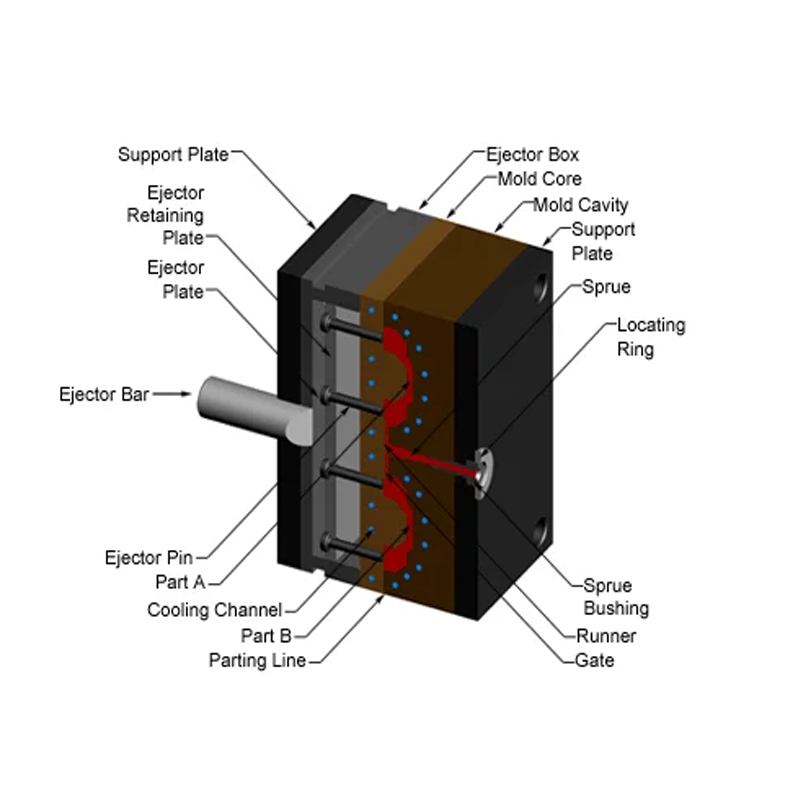
Types of Mold Cavities and Cores
Injection molds feature various types of cavities and cores, which can be categorized into several main types:
- Fixed Cavities and Cores:
– Standard Cavities and Cores: Machined from hardened steel, these form the primary components defining the part’s shape and features, remaining fixed throughout production.
– Simple Cavity/Core: Utilized for straightforward parts with minimal internal features, comprising a single cavity and core component.
– Multi-Cavity/Core: Configured with multiple cavities and cores to enable simultaneous production of several parts per cycle, enhancing efficiency.
- Interchangeable Cavity/Core:
– Interchangeable Cavity/Core: These allow for flexibility in producing diverse parts using the same mold base, facilitating quick changes to accommodate various designs.
– Replaceable Cavities and Cores: Easily swapped in and out, these are useful for producing different variations of parts using a single mold base.
– Sliding Cavities and Cores: Capable of movement within the mold, these create complex features like side holes or threads, often essential for intricate parts.
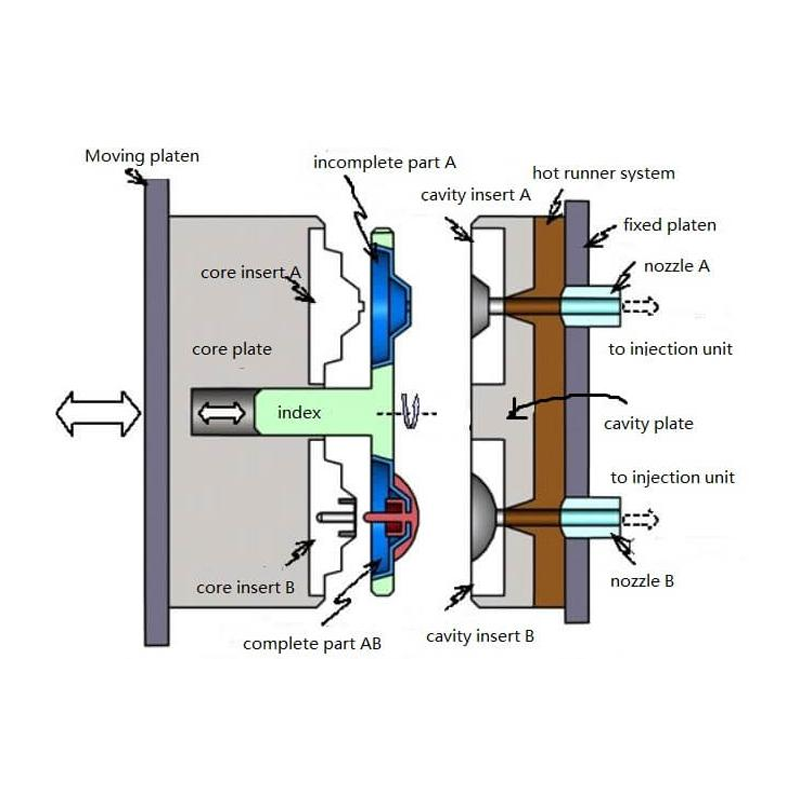
- Collapsible Core: This design allows for the creation of hollow or collapsible sections within the molded part, suitable for complex internal geometries.
- Unscrewing Cavity/Core: Utilized for producing threaded components, these can rotate or unscrew to facilitate the release of threaded parts from the mold.
The selection of cavity and core types hinges on part complexity, production volume, and specific design requirements, encompassing considerations like material flow and ease of mold assembly.
Cores vs. Cavities in Injection Molding
While both cores and cavities are vital to the injection molding process, they serve distinct functions and possess unique characteristics:
- Functionality:
– Cores: Essential for shaping internal features and intricate details, cores define the internal cavities and geometries of the part.
– Cavities: Primarily define the external shape, affecting the part’s appearance, texture, and finish.
- Importance:
– Cores: Critical for the part’s structural integrity and functionality, they significantly influence performance.
– Cavities: Focus on the aesthetic aspects, ensuring the final product meets visual quality standards.
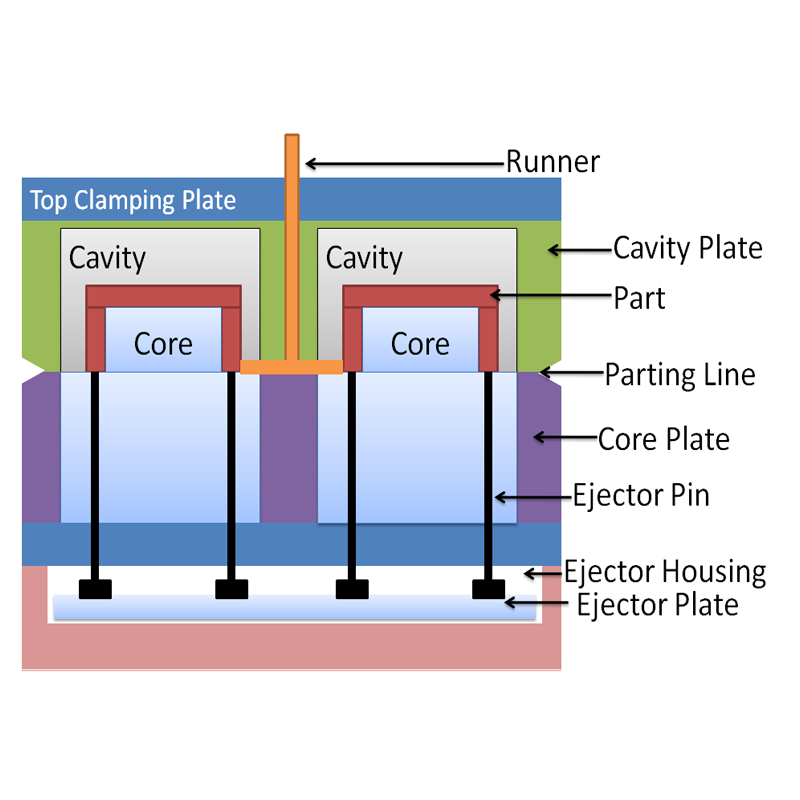
- Design Considerations:
– Cores: Design involves aspects like ejection mechanisms, cooling, and dimensional stability, potentially incorporating features like slides or lifters for undercuts.
– Cavities: Design focuses on optimal filling, cooling, and venting, including gating systems and surface textures for effective material flow and finish.
- Location:
– Cores: Positioned within the mold to form internal features.
– Cavities: Located opposite the cores, shaping the external surface of the part.
Toolingsun’s Expertise in Core and Cavity Design
At Toolingsun, we recognize the critical role of core and cavity design in the success of injection molding processes. Our expertise extends to advanced mold design, where we leverage state-of-the-art technology and materials to create molds that ensure precision and durability.
– Innovative Design Solutions: Our design team utilizes cutting-edge software to simulate and optimize core and cavity configurations, ensuring that they meet the specific requirements of each project while enhancing production efficiency.
– Durable Materials: We prioritize the use of high-quality, wear-resistant materials for our cores and cavities, enhancing the longevity and reliability of our molds.
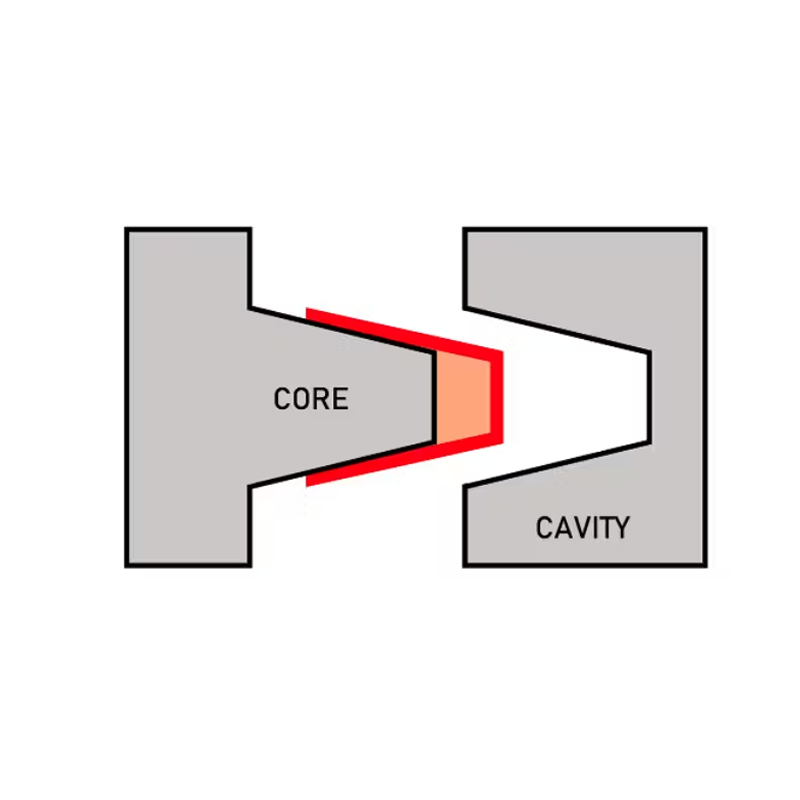
– Quality Control Protocols: Our rigorous quality control measures encompass extensive testing and inspection processes to verify the performance and safety of our molds, ensuring that our clients receive products of the highest standards.
– Customer-Centric Approach: At Toolingsun, we collaborate closely with clients to understand their unique needs, tailoring our solutions to deliver optimal results. Our commitment to excellence ensures that we meet and exceed customer expectations.
Conclusion
Cores and cavities are fundamental components of injection molding, each playing a vital role in the production of high-quality parts. While cores shape internal features to ensure functionality, cavities define the outer appearance to enhance aesthetics. Their designs, locations, and functions must be carefully considered to achieve precise, consistent results.
Understanding the importance and characteristics of cores and cavities is essential for successful injection molding processes. With Toolingsun’s commitment to innovation and quality, we stand ready to assist businesses in achieving their manufacturing goals while delivering exceptional products.

